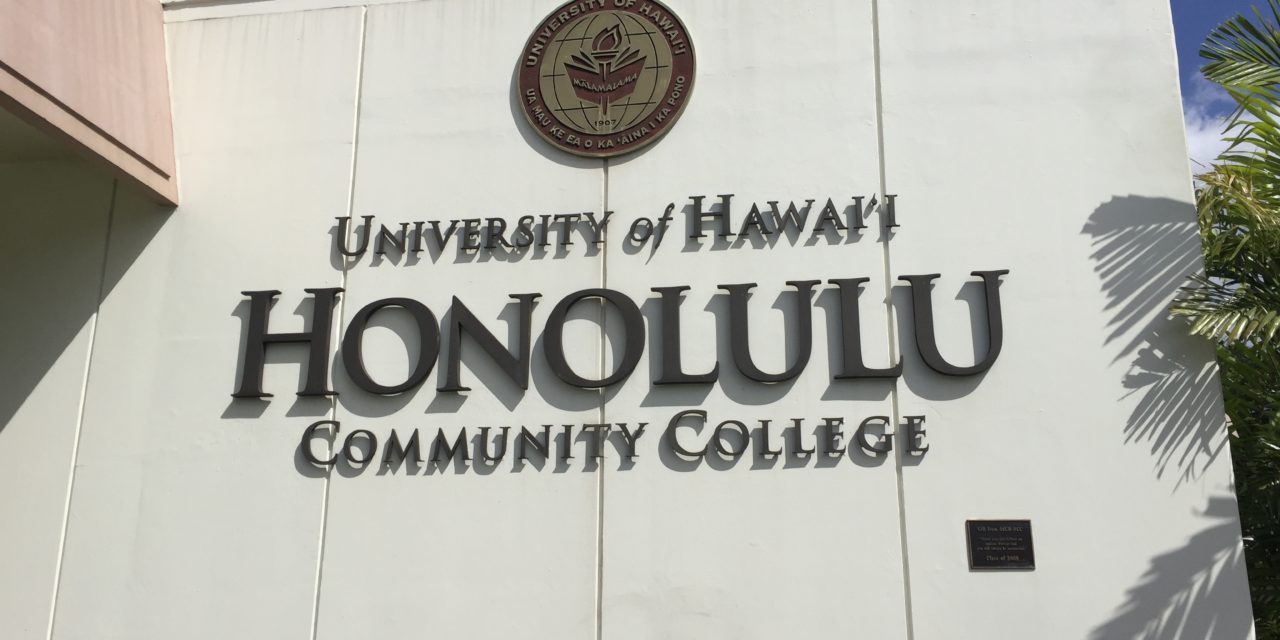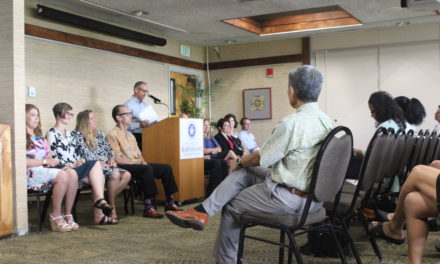By Chris Takahashi | Staff Writer
According to research from College Board, individuals who hold a college degree can expect to earn much more than their counterparts with just a high school diploma. Over a typical 40-year career, those that have received an associate’s degree can expect to earn 23 percent more while those with a bachelor’s degree can expect to earn 73 percent more.
The state of Hawai‘i understands that the increasing cost of tuition is often an impediment to those seeking degrees in higher education. Working with state legislators, the University of Hawai‘i is hopeful that plans for a new scholarship program — called Hawaiʻi’s Promise — will allow many students to earn a tuition-free degree at any of the community colleges within the system.
Hawai‘i House Bill (HB) 1613 and Senate Bill (2128), introduced during the 2016 legislative session, address the particulars of the new scholarship program. Per the language in each bill, recipients of the Hawaiʻi’s Promise scholarship must be U.S. citizens under the age of 26. Additionally, for students residing in counties with less than 100,000 people, scholarship recipients must hold a high school degree from a school in that county. Since Kaua‘i County’s population is less than the required number, students at Kaua‘i Community College would possibly be affected by this provision if they attended high school on a different island, such as Oʻahu.
As of now, the first iteration of Hawaiʻi’s Promise would operate as a pilot program if signed into law by Gov. David Ige this legislative session. Scholarship funds would be made available for the Fall 2017 semester. Since the program has not yet been approved by the state, details surrounding the application process have not been made available to the public. However, students will be required to submit a Free Application for Federal Student Aid (FAFSA) in order to be eligible for the scholarship.
If the scholarship fund is approved, Hawaiʻi’s Promise would aim to close the financial aid gap that may exist for a student receiving financial aid through federal grants, the University of Hawaiʻi, employer-sponsored scholarships, or private foundations such as that of Kamehameha Schools. The out-of-pocket tuition expenses partially unmet by these existing streams of financial aid can vary from student to student and across institutions in the UH system.
The UH Institution Research and Analysis Office estimated that a total of 134 KCC students had tuition expenses that were only partially covered by financial aid during the 2014-15 school year. In sum, that shortfall amounted to approximately $249,557.
At Kapi’olani Community College (KCC), Financial Aid Coordinator Jennifer Bradley applauds the plan for the new scholarship program. Bradley said that Hawaiʻi’s Promise is a “step in the right direction” and a “plus” given the fact that Hawai‘i does not have a formal state scholarship. She said that many of the would-be recipients of the new scholarship are especially deserving, and the funding gap that exists between tuition needs met by financial aid and out-of-pocket expenses is a real dilemma.
Tabulating data from students across the UH community college system, the shortfall statewide is approximately $1.7 million. The goal of the Hawaiʻi’s Promise scholarship program is to create a fund of $2.5 million that will meet current and future demand.
If the Hawaiʻi’s Promise scholarship program is a success, the University of Hawai‘i will likely pursue a similar program model for undergraduates at all four-year universities within the system.






